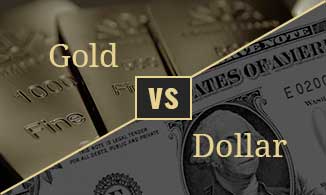[et_pb_section fb_built=”1″ _builder_version=”3.0.47″][et_pb_row custom_margin=”-40px|||” _builder_version=”3.2.2″ background_size=”initial” background_position=”top_left” background_repeat=”repeat”][et_pb_column type=”4_4″ _builder_version=”3.0.47″ parallax=”off” parallax_method=”on”][et_pb_text _builder_version=”3.2.2″ text_font=”||||||||” header_font=”||||||||” header_line_height=”2em” custom_margin=”|||” custom_padding=”||0px|”]
For most Americans, the thought of the government seizing the assets of an entire bank, closing it for weeks, and then paying law-abiding depositors 50 cents on the dollar and confiscating the rest is unthinkable. It isn’t.
In fact, it’s already happened many times around the world, and quite recently.
In fact, it even happened here in the U.S.
Consider: In 1933, the federal government decided that it would be illegal for American citizens to own gold. Then went about seizing gold from private individuals. The only assets that were safe were jewelry – which the U.S. could not efficiently issue debt on to finance New Deal programs – or collectors’ coins. But if you owned bullion held in a financial institution on your behalf, it would be confiscated by federal agents. Any bank officers who failed to cooperate faced jail time, and the banks would face official sanction or even closure if they failed to comply.
In theory, the U.S. provided dollars in compensation – but the dollar had been gutted of more than half of its value by then.
If they did it once, they can do it again – and there’s no reason to expect they will limit themselves to gold. In fact, in today’s economy, it would be much easier for the government to target cash – if not through outright confiscation, then through its slow-motion twin sister, inflation.
Hyperinflation in Argentina
There are many ways for the government to go about seizing the assets of savers. One way is to simply devalue the currency.
Consider Argentina. In 1945, Argentina’s peso was trading at 4.17 pesos to the dollar. That wasn’t even the worst devaluation in recent Argentinian history. By the end of 1970, you needed more than 352 pesos to buy a dollar. By mid 1983, you needed 98,500 pesos to buy a dollar. In mid 1983, you needed 98,500 pesos to buy a dollar. Looked at another way, the Argentinian peso has lost an average of 27 percent of its value against the dollar every year.
Anyone in Argentina who put their money in hard assets, like gold, precious metals and land has done just fine. Those relying on paper assets were devastated.
The Argentine government didn’t have to confiscate a single peso to do this. They just devalued their currency to near worthlessness. Savers were destroyed. But the Argentinian government and all borrowers were able to pay off their debts with nearly worthless currency.
Why did this happen?
The Argentinian government ran up insane levels of debt in the 1960s. They couldn’t refuse to pay those debts. But they could devalue the currency – and place the entire cost of the sovereign debt payments on savers and depositors.
Savers who thought they could move assets out of the country were thwarted by deposit freezes: Argentinian authorities simply blocked the ability of depositors to access their savings, except for trivial amounts.
So governments trap assets, freeze them, paralyze them, and drain them of their value to keep international lines of credit open.
Confiscation in Cyprus
We saw this again in Cyprus in 2013: Cypriots simply woke up one morning to learn that their money in the banks had been frozen. They couldn’t withdraw money to pay rent, mortgages, or even buy food. Over the weekend, a group of financiers sitting around a table quietly made the decision to destroy the lives of everyone who relied on paper assets.
Why?
The Population didn’t realize it at the time, but Cypriot economy was on the verge of collapse. Bankers and financiers were in a panic. Cypriot sovereign debt was so out of control that credit analysts downgraded it to junk status – making it nearly impossible for the government to raise further cash to pay basic expenses like police, fire and keeping the lights on. Interest rates for government debt reached 12 percent. It would have been even higher, but Cypress could not inflate its way out of the problem by firing up the printing press. They were tied into the Eurozone.
The IMF and European Central Bank put together a consortium of lenders of last resort and came through with a 10-million-euro bailout package to prevent total collapse. But the bailout came at a heavy price:
Close the Cyprus Popular Bank, confiscate a large fraction of all uninsured deposits there, and as much as 48 percent of all the assets in the Bank of Cypress. And so the government froze assets in place, until they could figure out how much they needed to confiscate to pay the debts, and get banks adequately capitalized enough to function again.
The government was hopelessly mired in debt, and the bill was due. Banks were woefully undercapitalized – through no fault of the depositors. But it didn’t matter. Cypress could not inflate its way out of the problem, and so they had no alternative: Freeze assets, until they could figure out how much they needed to confiscate to pay the debts, and get banks adequately capitalized enough to function again.
The European Central Bank is now pushing to expand their authority to impose draconian deposit freezes on European savers in the event of a crisis.
Whether confiscation happens as a result of outright bank seizure, or if it happens through the more subtle and insidious method of inflating and devaluing currency, the lesson is clear: Governments will do what they must to keep credit flowing. If it can happen in Argentina and Cypress, it can happen here, and for the same reasons:
- Out of control fiscal policy
- Irresponsible monetary policy and prolonged periods of “easy money” (quantitative easing)
- Inadequately capitalized bank
Currency is a convenient short-term method of exchange. But history shows that paper money is a terrible store of value for extended periods of time. There are just too many incentives for governments to destroy it through inflation or confiscation, and relatively little incentive for elected politicians to protect and preserve it.
This is why we have long advocated investors to keep a sizeable portion of their investment portfolios in gold, silver, palladium and platinum – all proven stores of value – especially during times of economic uncertainty.
If you are a U.S. citizen with investments, then you are dangerously exposed to the risk of inflation or outright confiscation. Call us today at 1-888-411-GOLD (4653) to speak to a live gold and silver consultant. Start protecting yourself and your assets today!
[/et_pb_text][/et_pb_column][/et_pb_row][/et_pb_section]






